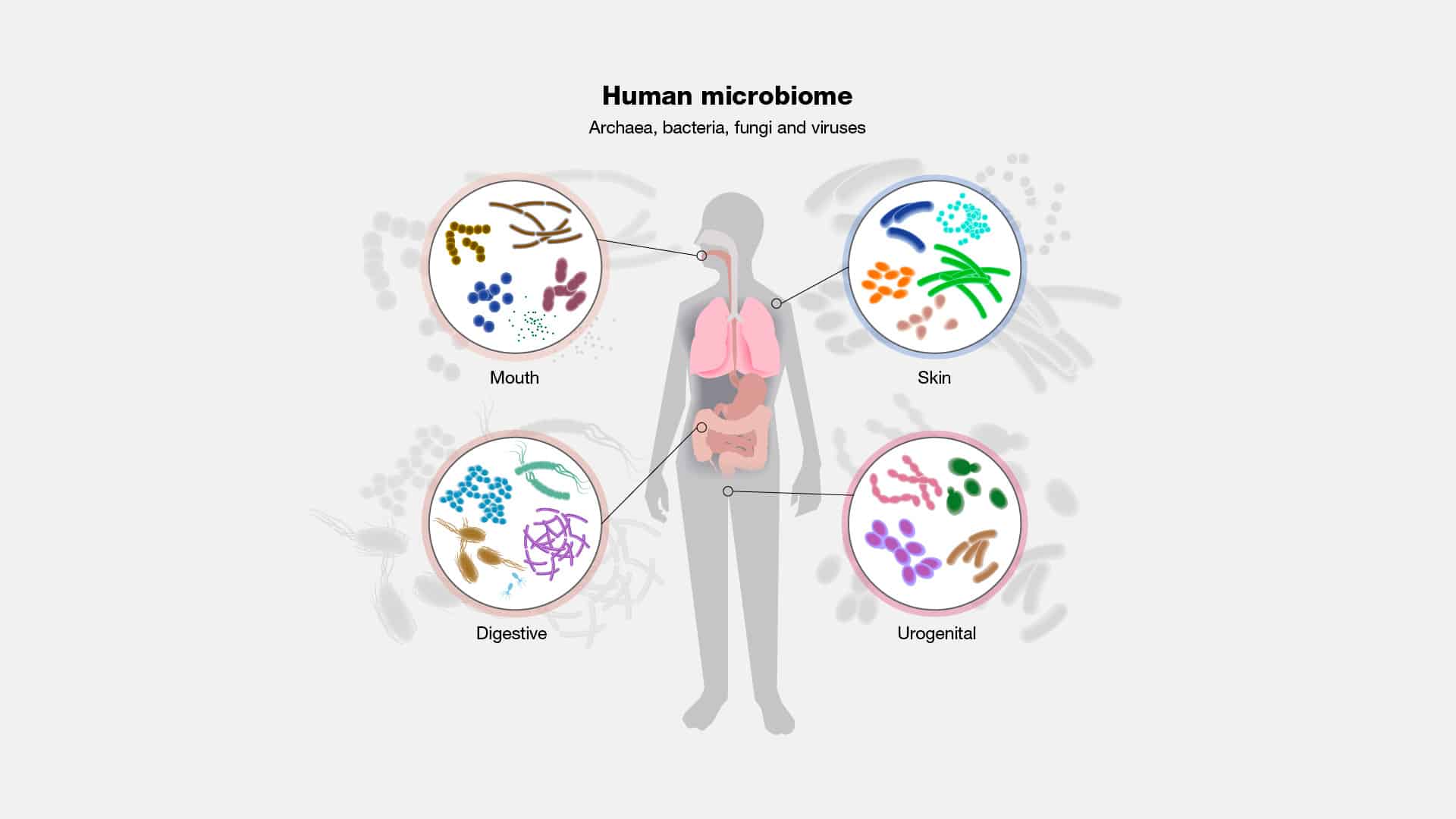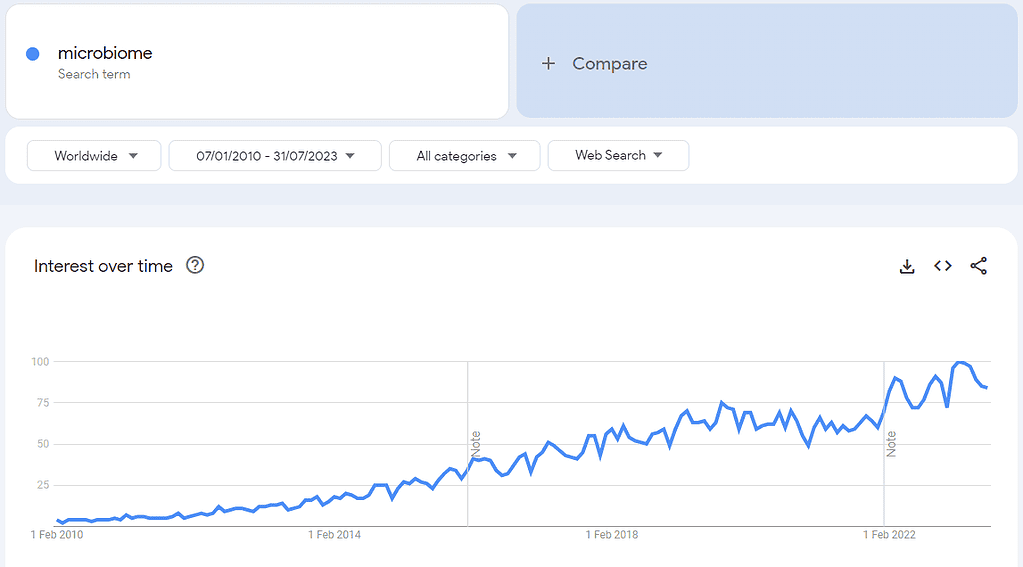The human microbiome is one of the most exciting topics in health nowadays. The scientific literature is burgeoning and every day, there seems to be a new study (or ten) coming out. It’s good that the gut bacteria is treated seriously and that we’re making progress in understanding it. But there’s also a downside to this surge of interest: many misconceptions have snuck in.
“The gut microbiome field has moved from being a very niche subject area to one of the hottest topics in all of science. However, a slight downside to this is that it has brought a lot of hype, and a temptation to over-simplify the really complex microbial interactions and activities occurring in our guts,” says microbiologist Alan Walker.
Walker and Lesley Hoyles have been working on the gut microbiome for over twenty years. It’s been a thrilling journey, says Walker, but it’s important to make sure that these myths don’t get entrenched. So in a Nature Microbiology Perspective piece, the two researchers addressed what they see as the most pervasive myths around the human microbiome.

The microbiome refers to the collective group of microorganisms, including bacteria, fungi, and viruses, that inhabit a specific environment. When related to humans, this term commonly refers to the microorganisms residing in or on a certain body part, like the digestive system. These communities of microorganisms have been linked to a number of processes ranging from memory function to immunity. But there are also a lot of misconceptions floating around this topic.
“I think it is very important to point out that lots of microbiome science is excellent! However, the amount of human microbiome research going on around the world has skyrocketed over the last decade or two, so the sheer volume of papers is likely to be a factor in misconceptions,” Walker adds.
Years ago, there used to be one or two studies on the human microbiome every month. Now, there are around a thousand. No one has time to read all of them, let alone fact-check everything that goes through. That’s why Walker and Hoyles focused on what they see as the most pervasive myths. The two researchers call for more accuracy and nuance when discussing the microbiome.
“Prof. Hoyles and I both noticed that certain statements that we knew to be untrue were being repeated time and time again in the scientific literature and in the general media. This can easily occur when writers assume that the previous people that wrote it were correct, and so the “fact” is repeated again and again in a chain-like fashion without checking the original source.”
Without further ado, here are the most important myths that the scientists have identified — and their subsequent debunking.
1. The microbiota outnumbers human cells by 10:1
This is one that many scientists have repeated uncritically in the past. It all seems to come down to a ‘back of the envelope’ calculation in the 1970s . More detailed analyses indicate that the true figure, albeit still impressive, is probably closer to a ratio of 1:1. Of course, this can vary greatly from person to person.
2. Microbiome research is a new field
The pace of research in the field has accelerated dramatically in the past 15 years, but this is not a new field. In fact, calling it a new field is creating a disservice to the excellent researchers who worked on the microbiome previously. We should appreciate the work of these pioneers and not ignore the earlier days of research.
3. Joshua Lederberg coined the term ‘microbiome’
Joshua Lederberg is a Nobel Laureate with an illustrous career. But despite his many achievements, he is not the inventor of the term ‘microbiome’. Although this is a relatively benign and inconsequential myth, it shows how easily falsehoods can propagate — because this is a myth that some scientists also perpetuate.

4. There are 1012 bacterial cells per gram of human feces
This figure is often perpetuated in studies and popular science articles, but even the source of this claim is hard to figure out. The real figure, calculated through modern methods, is closer to 1010. This may not seem like a large difference (after all, there are still a lot of cells), it’s an error of a factor of 100.
5. The human microbiota weighs 1 to 2 kg
Yet again, the original source is hard to pin down. Here too, there are lots of differences from person to person. However, the real figure seems unlikely to reach more than one kg. The majority of the human microbiota resides in the colon, and these microorganisms typically account for less than half of the weight of fecal solids. Since poop typically weighs less than 500g, this claim is very unlikely to be true.
6. The microbiota is inherited from the mother at birth
Some of the human microbiota is indeed transferred directly from the mother. However, most of the expansion in the microbiota happens later. In fact, it increases the most dramatically after weaning. This process is not fully understood, but your mother is definitely not the only one responsible for your microbiome.
7. Most diseases are characterized by a pathobiome
The pathobiome is loosely defined as “deleterious interactions between microbial communities and their host that lead to disease,” the researchers explain. But the term remains vague, imperfect, and ill-suited for clinical practice. While this may play a role in some instances, it’s very context-dependent. Overall, there’s no clear evidence that a characteristic pathobiome has a role in ‘most’ diseases.
“Unfortunately, nuance is usually very important when discussing the microbiome, and there is still a lot that we need to learn. Simplified statements often do not have the evidence base to support their use,” Walker mentions.
8. Gut bacteria contributes to obesity
The microbiome is connected to a number of significant conditions, but many studies that claim this are rather flimsy and hard to replicate. In fact, different studies regarding obesity and the human microbiome often have different results, and three meta-analyses (studies of studies) have found inconsistent results with regard to the human gut flora and obesity.

9. The gut microbiome is functionally redundant
This myth is largely aimed at researchers. Several studies found that despite the diverse range of microbial species present in the human gut, many of these species perform similar functions. However, the two authors argue that the statement is partly misleading or oversimplified due to methodological limitations.
10. Sequencing is unbiased
Sequence analysis is the process of subjecting a DNA, RNA or peptide sequence to any of a wide range of analytical methods. This is done to understand its features, function, structure, or evolution. Sequence analysis has been transformative for the study of the gut microbiome. But as powerful as this approach is, it is not without its own potential biases and it is important to be aware of this.
11. Most of the human microbiota is ‘unculturable’
This is another pervasive myth in research. In fact, a large number of the bacterial and archaeal component of our microbiota has already
been cultured, although viruses and fungi remain under-represented. Although this is time and resource-consuming, having access to cultured bacterial species has definite advantages for research.
12. We need standardized methodologies
Because there are so many biases, it is perhaps impossible to truly standardize all the research on the microbiome. If everyone is using the same methods with the same biases, they’re all missing the same things. So it’s preferable to use different methods depending on the context and objective of the research.
“The truth is that the ‘best’ method fundamentally depends on the underlying structure of the microbial community in a given sample and this can vary hugely between individuals and between body sites,” the researchers argue in their published perspective. “For these reasons we argue, as others have, that optimization and verification of sequence-based results with additional approaches are preferable to asking everyone to adopt the same method.”
While the researchers’ work is mostly aimed at other scientists, some of these misconceptions also permeate and reach the general population. In fact, some of them appear in both published scientific literature and general media.
But perhaps the most important thing, Walker emphasizes, is just how different one person’s microbiota is compared to others. This is why it’s hard to replicate studies and why studies sometimes have conflicting information.
“One of the trickiest challenges with human microbiome research is that the types of microbes that live on and inside humans varies hugely between individuals. Therefore, reproducing seemingly landmark findings can sometimes be a problem, as the same microbiota patterns are not always found when looking at different cohorts of people. Therefore, the comments on the difficulty of associating specific microbes with health/disease, and increased acknowledgment of the technological limitations of methodologies currently used to study microbiomes, are probably the most important for the field.”
The researcher also mentions that as more data comes in, these may need to be revisited.
“However, with current knowledge, we are confident that we have picked examples with a strong evidence base to suggest they are erroneous,” Walker concludes.
[no_toc]


